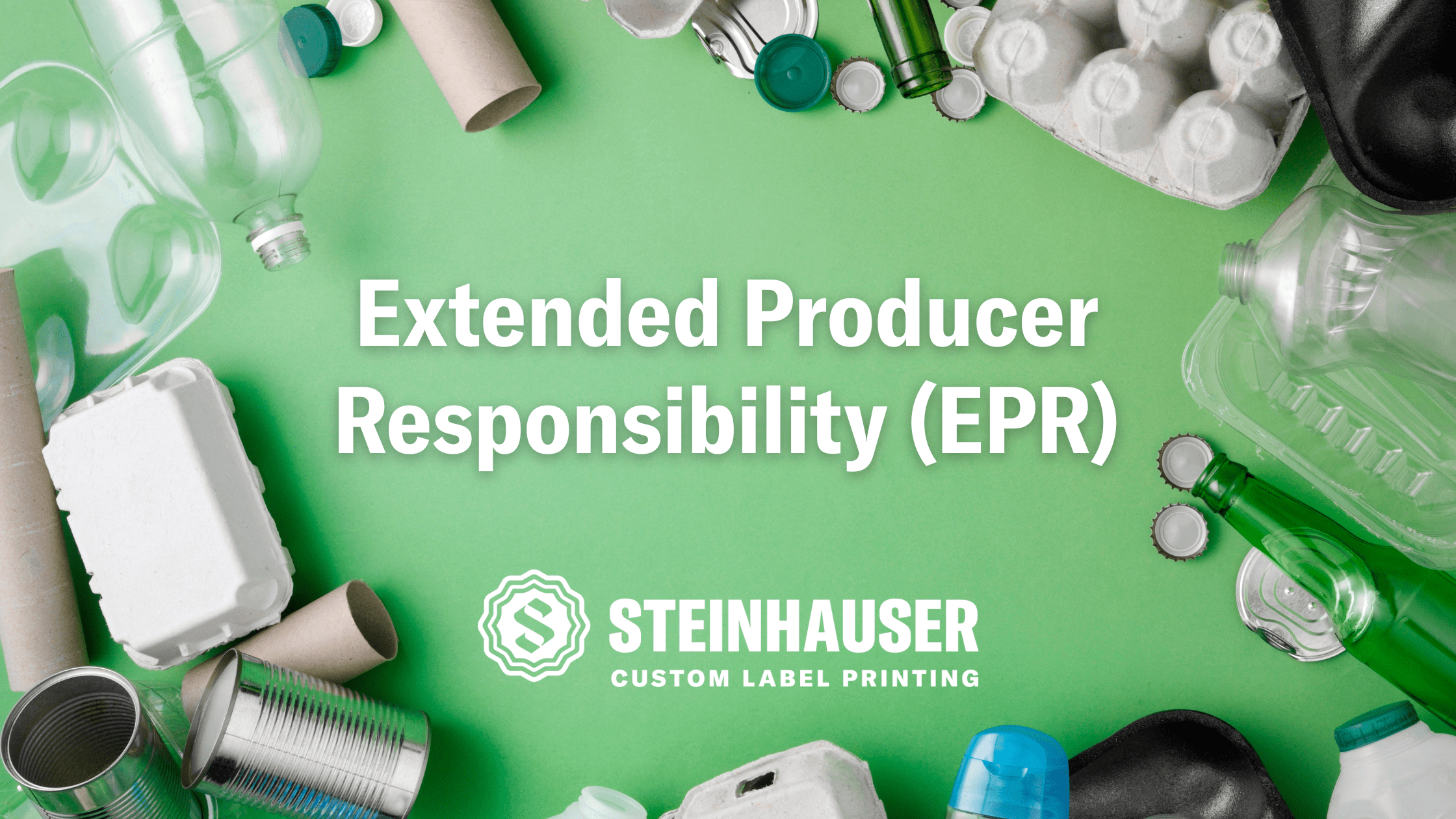Last year, we explored Extended Producer Responsibility (EPR) and how it’s changing packaging design. But the landscape is shifting rapidly, with new states drafting laws, and implementation beginning in several regions. In this blog, we focus on the current state of EPR, what CPG brands need to know about producer obligations, and resources available to stay informed.
We are not legal experts, and nothing in this blog should be considered legal advice. We strongly encourage working with an attorney and keeping up to date with webinars and educational materials provided by Circular Action Alliance (CAA). However, we recently attended a CAA webinar, and we wanted to provide an up-to-date overview of how EPR is affecting packaging and what CPG brands should be aware of.
What is EPR?
Extended Producer Responsibility (EPR) laws require companies to take responsibility for the full lifecycle of their packaging—from design to disposal. Brands will now be held accountable for the costs associated with collecting, recycling, or disposing of packaging materials.
What is a PRO?
A PRO (Producer Responsibility Organization) is a nonprofit entity that helps companies comply with state EPR laws. PROs apply to operate in each state, and the state approves or selects them. Some states may allow multiple PROs to operate, giving producers the option to select which organization they join.
PROs typically:
- Collect registration and reporting data from producers
- Set or administer fee programs
- Coordinate with municipalities, recyclers, and regulatory agencies
- Submit operating plans for approval by state agencies
Circular Action Alliance (CAA) has been appointed or selected as the PRO in Oregon, Colorado, California, Minnesota, and Maryland. Maine and Washington have not yet selected PROs.
PROs are typically made up of many companies working together. CAA, for example, includes members like Coca-Cola, Amazon, and Target.
How does the EPR process work for producers?
According to guidance from CAA, producers begin by registering through their state’s designated PRO portal and submitting company and packaging data. They must then report the amount and types of covered packaging they place on the market, typically once or twice per year. Based on the data submitted, the PRO will calculate fees that fund collection and recycling programs.
Why is EPR so confusing?
Several factors contribute to the confusion:
- State-by-state rollout
Because there is no federal EPR mandate for packaging, each state is developing its own legislation, definitions, timelines, and compliance mechanisms.
- Definitions and thresholds differ
What counts as “packaging” under one law may not under another. Who qualifies as a “producer” (brand owner, importer, co-manufacturer) can also differ by statute or regulation.
Definitions of covered packaging materials vary widely and can include paper, plastic, glass, metal, and food service ware.
- Reporting, deadlines, and fee structures are dynamic
While specific deadlines exist in each state, they vary and may be updated as rules evolve.
Despite confusion, several states have moved forward with implementation.

Where does EPR stand today?
7 states have passed laws on EPR for packaging: Oregon, California, Colorado, Minnesota, Maine, Maryland, and Washington. Here are the upcoming deadlines by state:

More than a dozen additional states are moving towards EPR legislation, so it’s not slowing down anytime soon.
It’s important to know that although many deadlines have passed, if you believe you are an obligated producer, you should contact a PRO to register. Most states list their approved PROs and provide registration portals on their official websites or through CAA. Late registration can result in significant fees in some states.
How does a CPG company determine if it’s an obligated producer?
CAA explicitly states that it does not provide legal advice or make final determinations for companies.
In general, a simple way to think about it is this: if your company is introducing packaging into a state that ends up in curbside recycling streams, you’re likely considered a “producer.”
However, legal definitions vary. CAA specifically advises companies to answer two key questions:
- Is the material associated with my products covered by EPR laws?
- Is my business the responsible producer for those materials?
In many EPR laws, “producer” is defined broadly to include brand owners, importers, or companies introducing packaging into the state.
Proskauer says that some states apply a tiered responsibility approach, where responsibility generally falls first on the brand owner or manufacturer, then on importers or distributors, and finally on retailers or the first point of sale if no other party qualifies.
Because definitions and responsibilities vary by state, companies should carefully assess who is considered the producer.
If my company is located in Ohio, but we sell in Oregon, do we need to register?
Yes—from what we understand, obligations apply in each state where you sell or ship packaged goods, including via e-commerce.
Where to find additional support:
Navigating EPR is no small task for CPG companies. The laws are complex, vary by state, and continue to evolve. Fortunately, there are resources to help brands stay informed. The Circular Action Alliance (CAA) offers guidance through its registration portal, recorded webinars, and a dedicated producer support team at producer.support@circularaction.org. Additional resources include The Recycling Partnership and Sustainable Packaging Coalition.
That said, every company’s situation is different. It’s important to review the regulations carefully and speak with legal counsel to determine your specific obligations.
As regulations evolve, understanding how packaging choices impact recyclability and compliance is critical. You can read more about how labels and shrink sleeves fit into this picture in our previous blog.
Steinhauser works to stay informed on developments and support our customers as a proactive, trusted supply chain partner, helping brands navigate through packaging evolutions.
Found this useful? Join our monthly newsletter for practical tips, updates, and a behind-the-scenes look at Steinhauser. No spam, ever.


